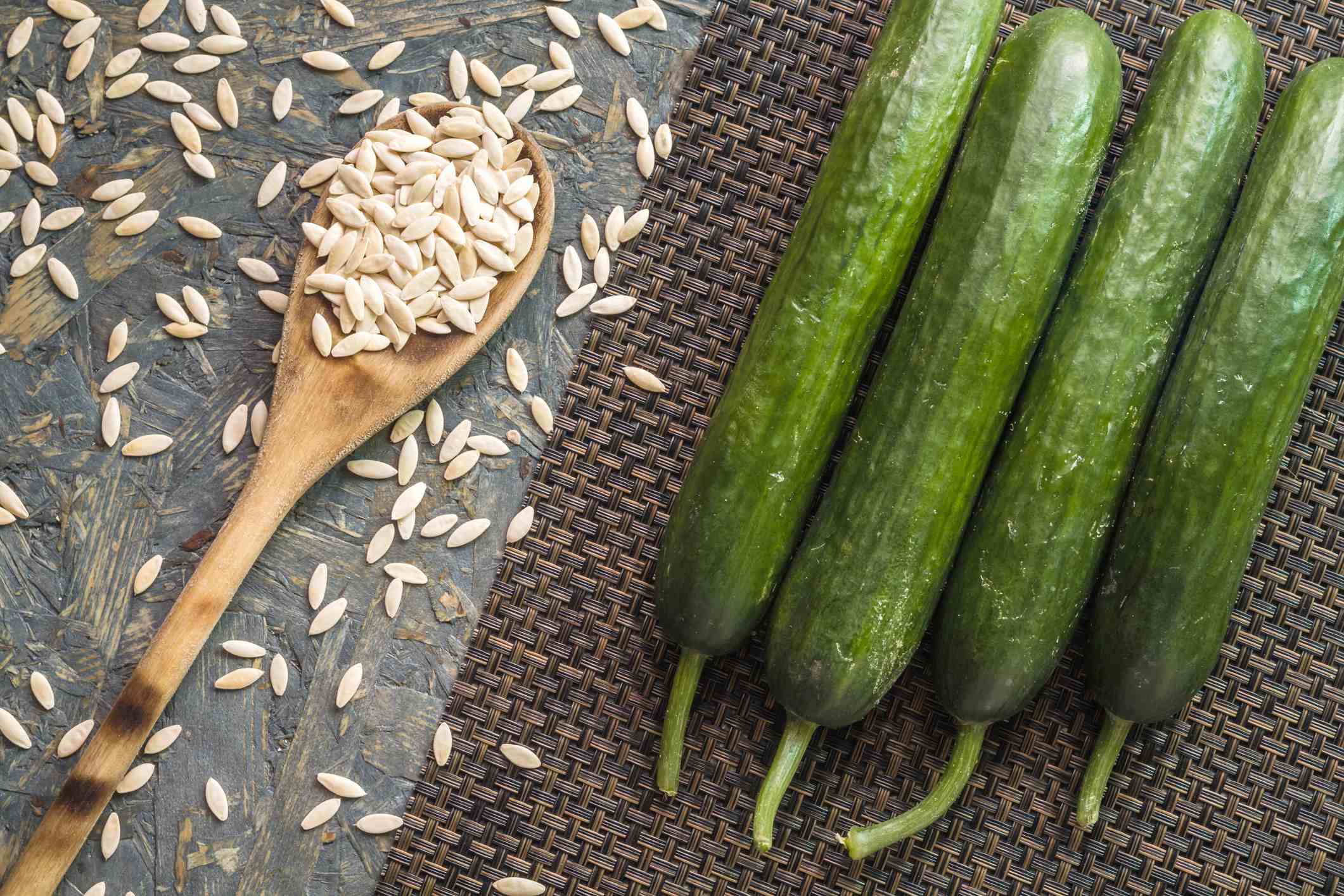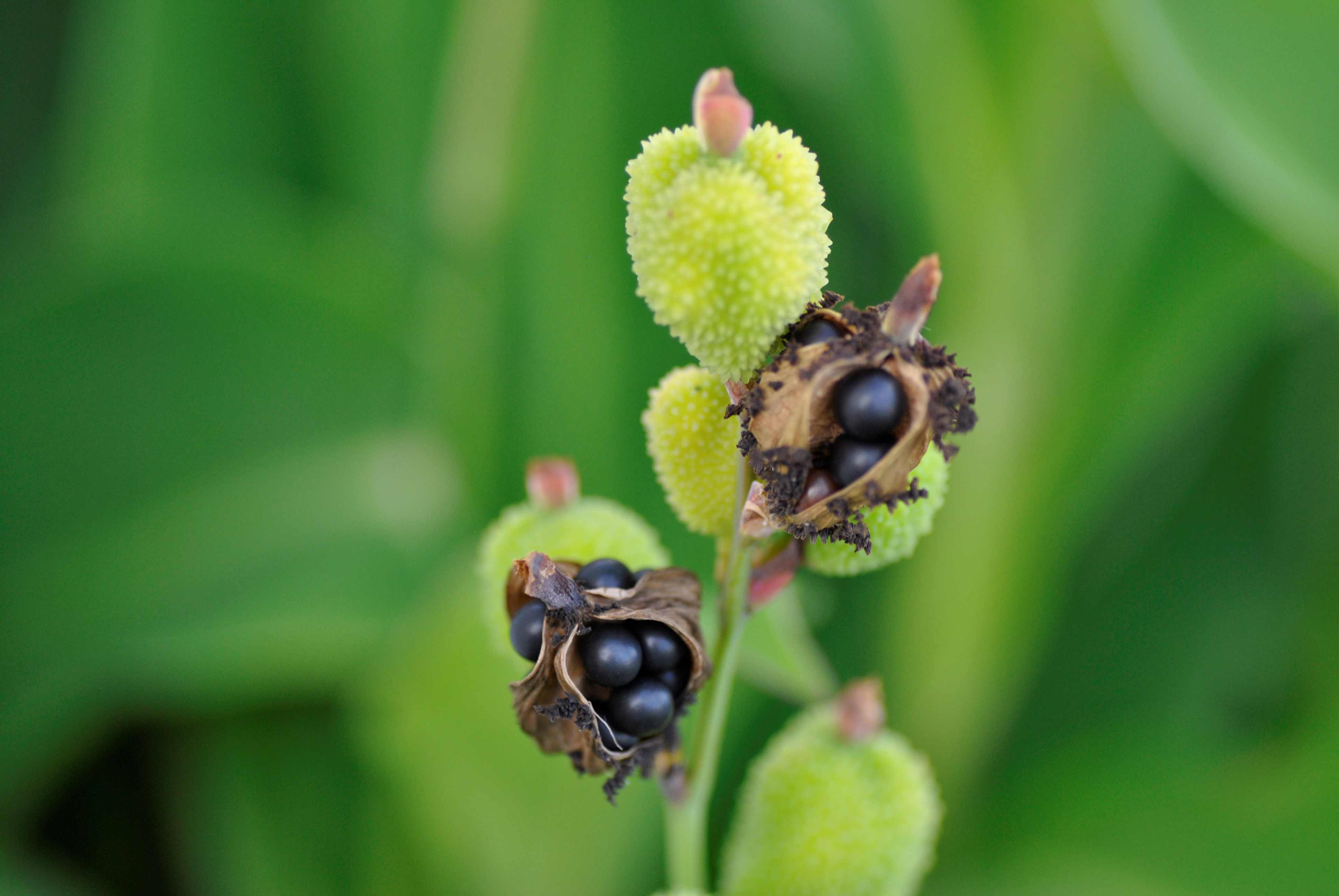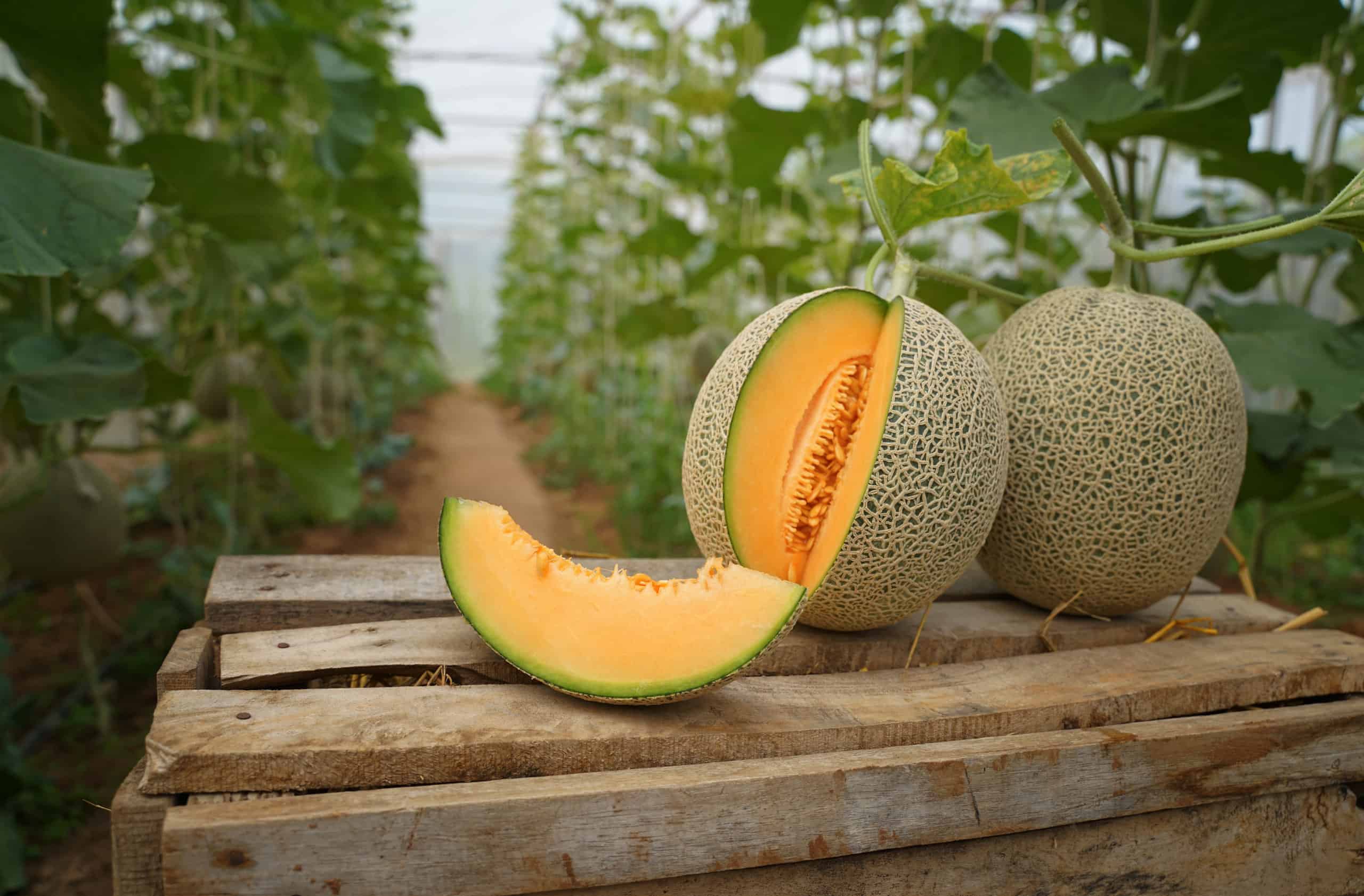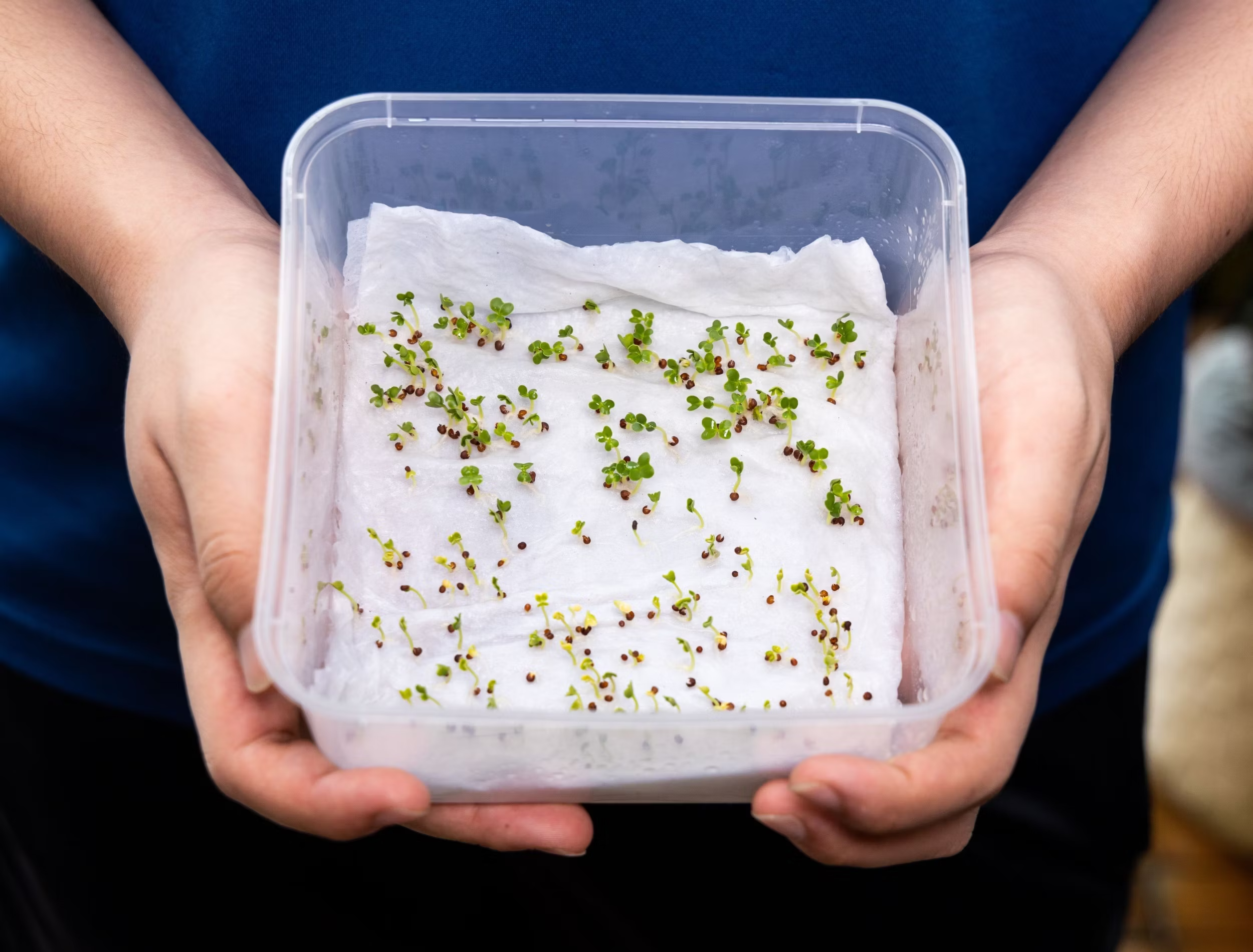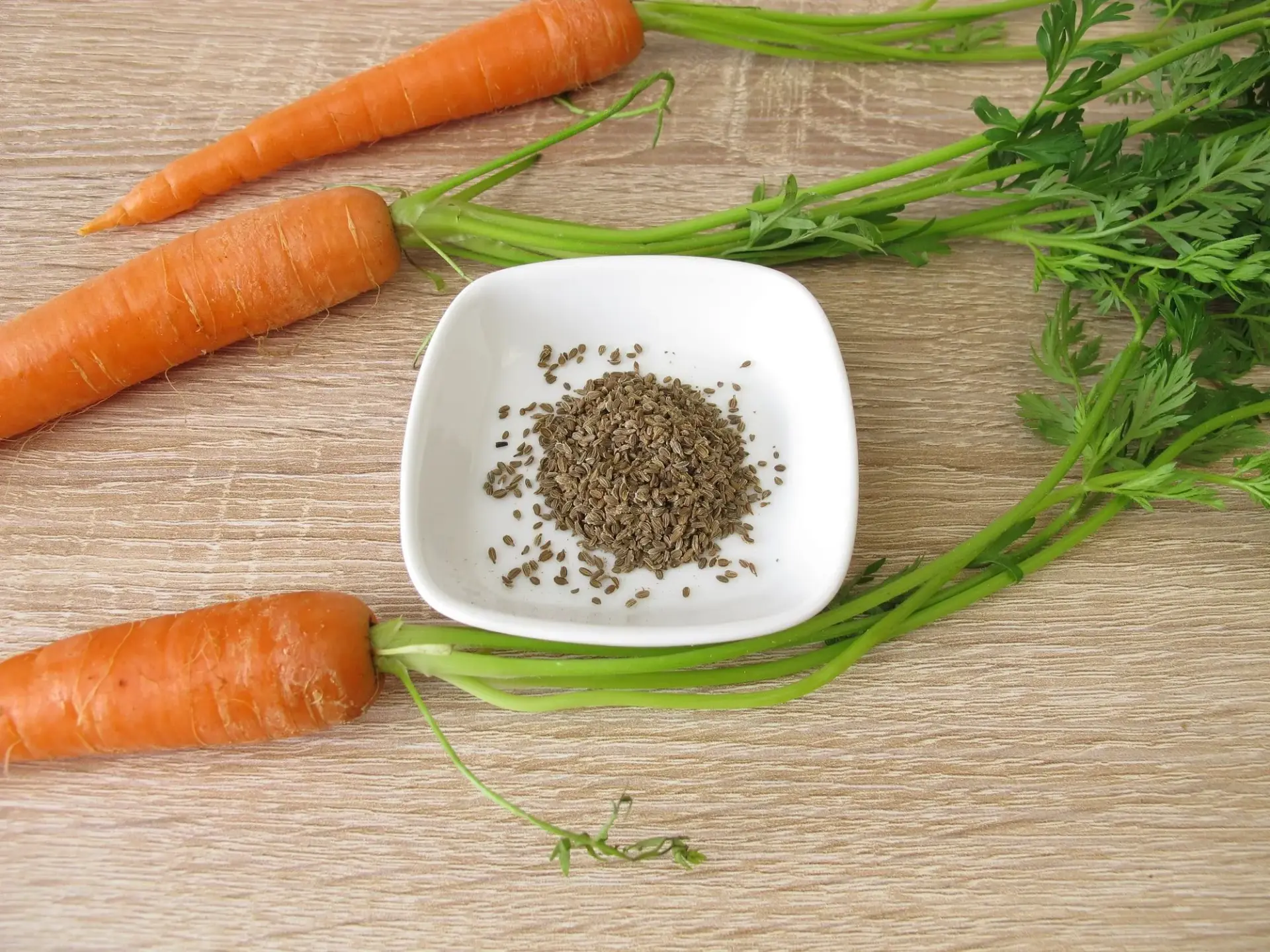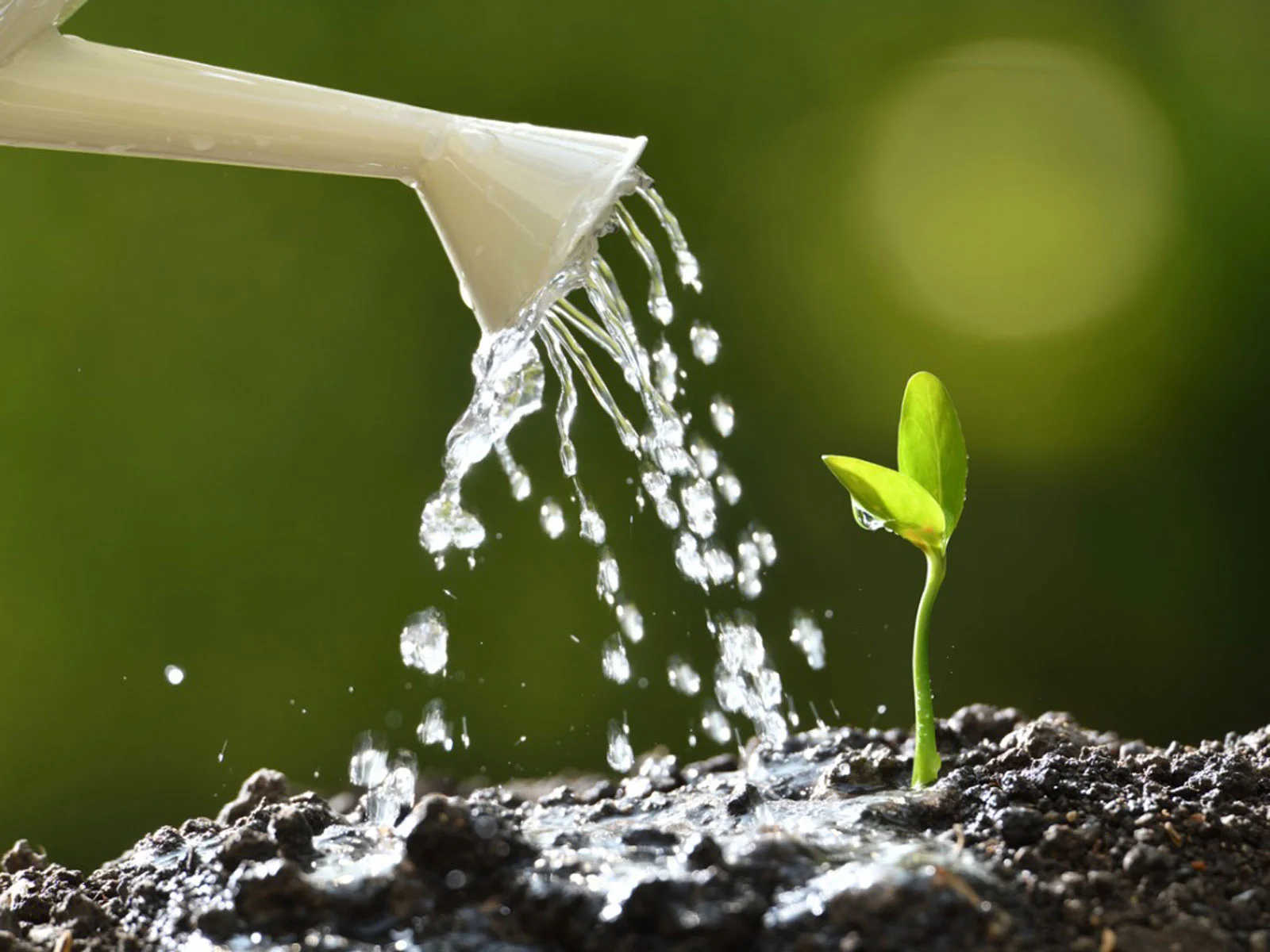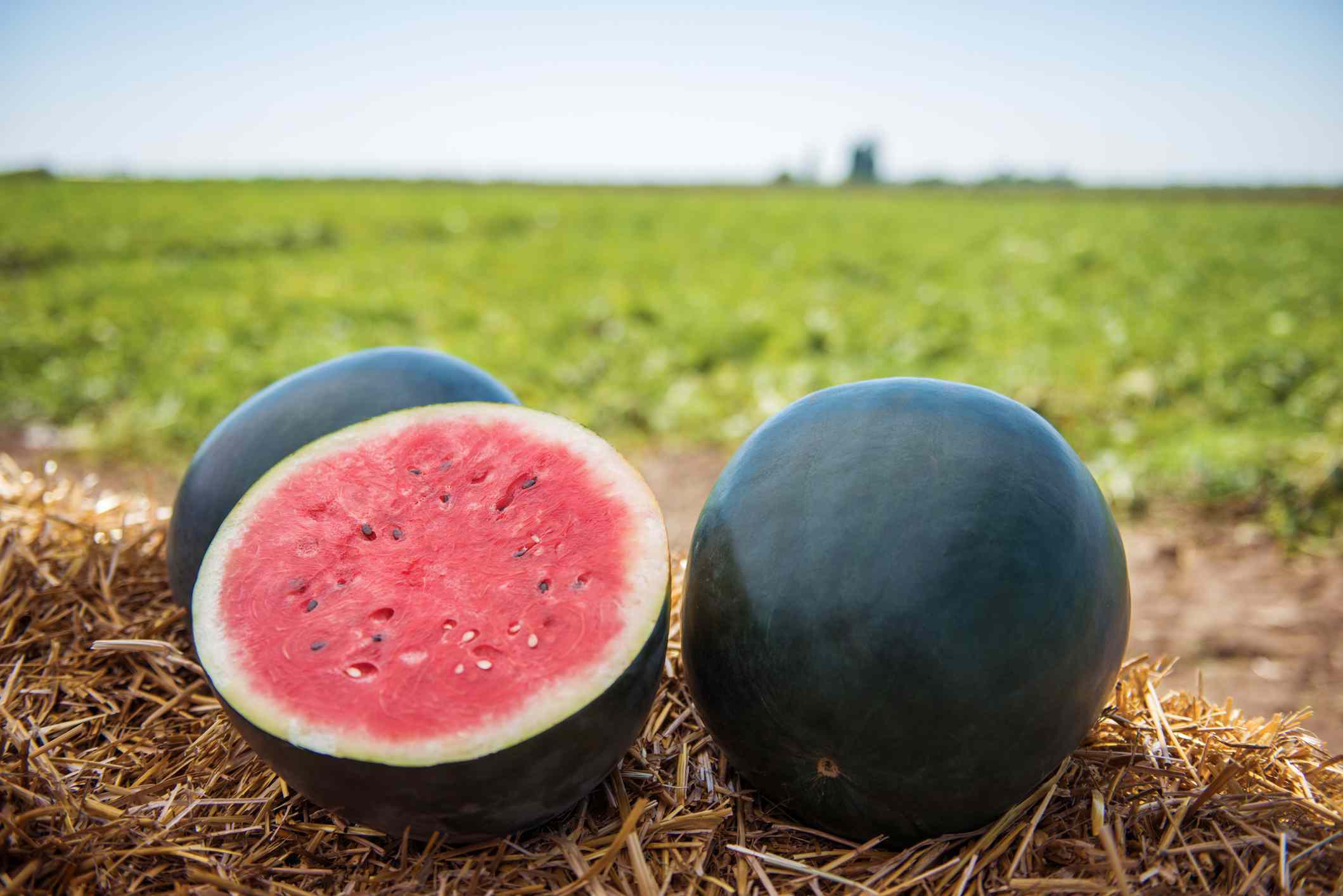Home>Gardening Tips and Tricks>Eco-Friendly Gardening>How To Germinate Weed Seeds For Hydroponics


Eco-Friendly Gardening
How To Germinate Weed Seeds For Hydroponics
Modified: January 22, 2024
Learn how to germinate weed seeds for hydroponics in an eco-friendly way with our comprehensive guide on eco-friendly gardening.
(Many of the links in this article redirect to a specific reviewed product. Your purchase of these products through affiliate links helps to generate commission for Chicagolandgardening.com, at no extra cost. Learn more)
Table of Contents
- Introduction
- What is Hydroponics?
- Benefits of Growing Weed Seeds in Hydroponics
- Choosing the Right Seeds for Hydroponics
- Preparing the Germination Environment
- Germination Methods for Weed Seeds
- Technique 1: Paper Towel Method
- Technique 2: Rockwool Cubes Method
- Technique 3: Jiffy Pellet Method
- Technique 4: Water Germination Method
- Proper Care During Germination
- Transferring Germinated Seeds to the Hydroponic System
- Conclusion
Introduction
Welcome to the world of hydroponics – a revolutionary method of gardening that is gaining popularity among eco-conscious individuals who want to grow plants without the use of soil. One particular area where hydroponics is making waves is in the cultivation of weed seeds. Whether you’re a seasoned cultivator or a beginner eager to explore new gardening techniques, growing weed seeds in a hydroponic system offers numerous benefits.
Hydroponics is a soil-less gardening method that relies on water and a nutrient-rich solution to support plant growth. This innovative technique provides plants with precisely what they need, leading to faster growth rates, higher yields, and better overall plant health. By eliminating the need for soil, hydroponics offers a more sustainable and environmentally friendly approach to gardening.
When it comes to cultivating weed seeds, hydroponics has become a game-changer. Not only does it provide a controlled environment that promotes optimal growth, but it also allows cultivators to grow their plants discreetly, making it ideal for those in areas where marijuana cultivation is restricted.
Hydroponic systems for marijuana cultivation come in various forms, including Deep Water Culture (DWC), Nutrient Film Technique (NFT), and Aeroponics. Each system offers different advantages and requires specific techniques for successful germination and growth. In this comprehensive guide, we will explore the techniques and methods to germinate weed seeds specifically for hydroponic systems, enabling you to start your hydroponic weed garden with confidence.
Before we delve into the germination process, let’s first understand the benefits of growing weed seeds in hydroponics and how to choose the right seeds for this unique gardening method.
What is Hydroponics?
Hydroponics is a method of growing plants that uses water as the primary medium instead of soil. In traditional gardening, plants rely on soil to provide them with nutrients, support, and water. However, in hydroponics, the plant’s roots are suspended in a nutrient-rich solution, allowing them to directly absorb the essential elements they need for growth.
This soil-less gardening technique offers numerous advantages over traditional soil-based cultivation. Firstly, hydroponics allows growers to control the nutrient levels and pH balance of the growing solution, ensuring that plants receive precisely what they need at each stage of their growth. This level of precision means that plants grow faster and produce higher yields compared to traditional gardening methods.
Additionally, hydroponics has a smaller environmental footprint. It uses up to 90% less water compared to soil-based cultivation because the water is recirculated within the system. This water efficiency is especially crucial in regions where water scarcity is a concern. Furthermore, hydroponics eliminates the need for chemical fertilizers, pesticides, and herbicides, resulting in a more eco-friendly and sustainable way of gardening.
The absence of soil in hydroponics also minimizes the risk of soil-borne diseases and pests. This leads to healthier plants and reduces the need for pesticides and fungicides. Moreover, hydroponics enables cultivators to grow plants indoors or in small spaces, making it ideal for urban environments or areas with limited gardening space.
There are several different types of hydroponic systems, each with its own set of advantages and suitable plants. Some popular hydroponic systems include Deep Water Culture (DWC), Nutrient Film Technique (NFT), and Aeroponics. These systems provide the necessary water, nutrients, and oxygen to the plants’ roots, ensuring optimal growth conditions.
Overall, hydroponics offers a highly efficient and sustainable way to grow plants. It provides control over essential factors such as water, nutrients, and lighting, leading to faster growth, higher yields, and healthier plants. By eliminating the need for soil and reducing water usage, hydroponics is revolutionizing the way we cultivate various crops, including the ever-popular weed seeds.
Benefits of Growing Weed Seeds in Hydroponics
Growing weed seeds in a hydroponic system offers numerous benefits that make it an attractive option for cultivators. Let’s explore some of the advantages of using hydroponics for cultivating weed seeds:
- Optimal Nutrient Uptake: Hydroponics allows precise control over the nutrient levels, ensuring that the plants receive the exact nutrients they need for healthy growth. The nutrient solution is delivered directly to the plant’s roots, maximizing nutrient uptake and promoting faster growth rates.
- Faster Growth and Higher Yields: With the optimal nutrient levels and direct access to water, plants grown in hydroponics tend to grow significantly faster compared to traditional soil-based cultivation. This enhanced growth rate translates into higher yields, making hydroponics an attractive option for commercial cultivators.
- Water Efficiency: Hydroponics uses significantly less water compared to traditional soil-based gardening. Water is recirculated within the system, reducing the amount of water needed to grow weed plants. This water efficiency is especially important in areas with water scarcity, helping to conserve this precious resource.
- Controlled Environment: Hydroponic systems provide a controlled environment where temperature, humidity, and lighting can be regulated. This results in optimal growing conditions for the weed plants, which can lead to improved overall plant health and reduced risk of diseases and pests.
- Year-Round Cultivation: With hydroponics, you have the ability to grow weed seeds year-round, regardless of the external climate conditions. By providing the essential elements needed for growth, hydroponics eliminates the dependence on seasonal changes, allowing for a continuous harvest throughout the year.
- Space Efficiency: Hydroponics is highly space-efficient and can be set up in small indoor spaces. This makes it an ideal option for cultivators with limited garden space or those living in urban environments. Vertical hydroponic systems, such as tower gardens, maximize space utilization, allowing for increased plant density.
- Discreet Cultivation: Growing weed seeds in hydroponics offers a level of discreetness that traditional soil-based gardening cannot provide. Hydroponic systems can be set up indoors, in dedicated grow rooms or tents, minimizing the visibility and smell associated with marijuana cultivation. This makes it an attractive option for those in areas where marijuana cultivation is restricted.
Overall, growing weed seeds in a hydroponic system provides growers with better control over the growing environment, faster growth rates, higher yields, and a more sustainable approach to cultivation. Whether you’re a commercial cultivator or an enthusiast looking to maximize your harvest, hydroponics is undoubtedly a game-changing technique for growing weed seeds.
Choosing the Right Seeds for Hydroponics
Choosing the right seeds is crucial for successful hydroponic cultivation of weed plants. Here are some important factors to consider when selecting seeds for your hydroponic garden:
- Strain Selection: Begin by considering the desired strain of marijuana you want to grow. Each strain has its own unique characteristics, including growth patterns, flowering time, cannabinoid profile, and flavor. Research different strains and choose one that aligns with your preferences and growing goals.
- Genetics and Stability: Opt for seeds from reputable breeders who have a history of producing stable and genetically consistent strains. Stable genetics ensure that the plants will exhibit the desired traits, such as high yields, potent cannabinoids, and resistance to pests and diseases.
- Feminized or Regular Seeds: In hydroponics, many cultivators prefer to work with feminized seeds. These seeds have been selectively bred to produce exclusively female plants, eliminating the risk of male plants pollinating the females and reducing overall yield. However, if you have the expertise and resources to manage regular seeds, they can be a cost-effective option.
- Indoor or Outdoor Cultivation: Consider whether you plan to grow your weed plants indoors or outdoors. Some strains may be better suited for indoor hydroponic cultivation, thriving under artificial lighting and controlled environmental conditions. Other strains may be more resilient and better suited for outdoor hydroponic gardens.
- Growing Difficulty: Take into account your level of experience and expertise with hydroponics. Some strains are more forgiving and easier to grow, making them suitable for novice cultivators. Other strains may require more advanced techniques and precise nutrient management, making them better suited for experienced growers.
- Desired Effects and Flavor: Consider the effects and flavor profile you want to achieve with your weed plants. Different strains offer varying levels of THC, CBD, and other cannabinoids, resulting in different psychoactive and medicinal effects. Some strains are known for their uplifting and energizing effects, while others provide relaxation and pain relief.
- Space and Yield: Evaluate the space you have available in your hydroponic system and consider the expected yield of the strain. Some strains naturally produce larger yields, while others may be more compact and suitable for smaller grow spaces.
With a wide variety of strains available on the market, careful consideration of these factors will help you choose the right seeds for your hydroponic weed garden. It’s also a good idea to consult with experienced growers or breeders to get recommendations based on your specific needs and growing conditions. Remember, selecting high-quality seeds is the first step toward a successful hydroponic cultivation journey.
Preparing the Germination Environment
Creating the right germination environment is crucial to ensure the successful germination of weed seeds in your hydroponic garden. Follow these steps to prepare the optimal environment for germination:
- Clean and Sterilize: Before starting the germination process, ensure that your equipment, containers, and germination medium are clean and sterilized. This helps minimize the risk of contamination and promotes healthy seedling development. Use a mild bleach solution or sterilizing agent to thoroughly clean all tools and surfaces.
- Choose the Germination Medium: Select a suitable germination medium for your hydroponic system. Common options include rockwool cubes, jiffy pellets, or a moist paper towel. The medium should provide moisture retention, good drainage, and air circulation to promote healthy root development.
- Soak the Seed: Some growers recommend soaking the seeds in water or a seedling starter solution for a few hours or overnight before germination. This helps soften the seed coat and promote quicker germination. Be careful not to exceed the recommended soaking time, as it may damage the seeds.
- Temperature and Humidity: Maintain the appropriate temperature and humidity levels for germination. Most weed seeds germinate best at temperatures between 70-85°F (21-29°C), with humidity levels around 70%. Use a propagator, humidity dome, or plastic wrap to create a stable and humid environment for the seeds.
- Lighting: While light is not essential for seed germination, providing a low-intensity light source can help guide the seedlings towards the surface and promote straighter growth. LED grow lights or fluorescent lights placed a few inches above the germination area are commonly used for this purpose.
- Avoid Overwatering: It’s important to strike a balance when it comes to watering during germination. Overwatering can drown the seeds, inhibit oxygen uptake, and lead to fungal growth. Keep the germination medium consistently moist but not soggy. Using a spray bottle or misting system is an effective way to maintain moisture levels.
- Patience and Observation: Germination times can vary depending on the strain and environmental conditions. Some seeds may sprout within a few days, while others may take up to a week or more. Be patient and observe your seeds regularly without disturbing them. Once the seeds have germinated and the seedlings have emerged, you can proceed to transfer them into your hydroponic system.
By taking the time to properly prepare the germination environment, you will provide the seeds with the optimal conditions they need to sprout and develop healthy roots. Remember, maintaining cleanliness, temperature, humidity, lighting, and appropriate watering practices are key factors in ensuring successful germination in your hydroponic garden.
Germination Methods for Weed Seeds
Germinating weed seeds is an essential step in the cultivation process and sets the foundation for healthy plant growth. There are several popular germination methods that can be used for weed seeds in a hydroponic system. Let’s explore these methods:
- Paper Towel Method: This method is simple and widely used. Moisten a paper towel or a few layers of unbleached paper towels with distilled water or a seedling starter solution. Place the seeds evenly spaced on the moist paper towel and fold it over to cover the seeds. Keep the paper towel in a warm and dark place, such as a seedling tray or propagator. Check regularly for moisture, ensuring the paper towel remains damp but not soaked. Once the seeds have sprouted taproots, transfer them gently into your hydroponic system.
- Rockwool Cubes Method: Rockwool cubes are a popular germination medium for hydroponic systems. Soak rockwool cubes in pH balanced water to ensure they are fully hydrated. Make a small hole in each cube using a pencil or similar tool and place the seed in the hole, covering it lightly with the surrounding rockwool. Place the cubes in a propagator or seedling tray and maintain a warm and humid environment. Monitor the moisture level of the cubes and ensure they remain consistently moist. Once the seedlings have emerged and roots start to grow through the cube, transfer them to your hydroponic system.
- Jiffy Pellet Method: Jiffy pellets are expandable peat pellets commonly used for germinating seeds. Soak the pellets in water to allow them to expand and fully hydrate. Make a small hole in each pellet and place the seed inside, covering it lightly. Place the pellets in a propagator or seedling tray and maintain an ideal germination temperature. Keep the pellets consistently moist but avoid overwatering. As the seedlings grow and roots emerge from the pellets, transfer them gently to your hydroponic system.
- Water Germination Method: The water germination method involves soaking the seeds directly in a glass of water or a container filled with distilled water or a seedling starter solution. Allow the seeds to soak for about 24 to 48 hours or until they sink to the bottom of the container. Maintain a room temperature environment or place the container on a seedling heating mat to promote germination. Check the seeds regularly for any signs of sprouting and, once sprouted taproots are visible, transfer the seeds gently into your hydroponic system.
Each germination method has its advantages, and the choice depends on personal preference, available resources, and the specific requirements of your hydroponic system. Regardless of the method chosen, it’s important to maintain proper moisture, temperature, and hygiene throughout the germination process to ensure successful sprouting of the weed seeds.
Remember to handle the germinated seeds with care, avoiding damage to the fragile taproot or emerging seedling. Once the seedlings have developed roots and are ready for transplanting, they can be safely transferred to their permanent home in your hydroponic system, setting the stage for healthy growth and a fruitful harvest.
Technique 1: Paper Towel Method
The paper towel method is a simple and popular technique for germinating weed seeds in a hydroponic system. It requires minimal equipment and provides a controlled and moisture-rich environment for the seeds to sprout. Here’s how to use the paper towel method:
- Prepare the Materials: Gather your weed seeds, a few layers of unbleached paper towels, and distilled water or a seedling starter solution. Ensure that your hands and workspace are clean to prevent contamination.
- Moisten the Paper Towel: Moisten the paper towel with distilled water or a seedling starter solution, making sure it is damp but not soaking wet. Excess water can suffocate the seeds or promote fungal growth.
- Place the Seeds: Place the weed seeds evenly spaced on the moist paper towel. Leave adequate space between the seeds to prevent them from touching or overlapping. This allows each seed to receive sufficient moisture and airflow.
- Cover the Seeds: Fold the moist paper towel over the seeds, ensuring they are completely covered. This helps to sandwich the seeds between the damp layers, creating a humid microclimate to facilitate germination.
- Create a Germination Environment: Place the folded paper towel with the seeds in a seedling tray, a plastic bag, or a propagator to maintain warmth and humidity. Make sure the environment remains dark to simulate the natural conditions seeds experience when buried in soil.
- Monitor and Maintain Moisture: Check the paper towel regularly to ensure it remains damp throughout the germination process. If it starts to dry out, mist it with a spray bottle or add a few drops of water to maintain the moisture levels.
- Wait for Germination: Place the germination container in a warm location, with temperatures ideally between 70-85°F (21-29°C). Germination times vary, but most weed seeds will sprout taproots within a few days to a week.
- Transfer to Hydroponic System: Once the seeds have sprouted taproots, it’s time to transfer them gently to your hydroponic system. Carefully handle the sprouted seeds by their taproots, being cautious not to damage the fragile seedlings.
The paper towel method provides excellent visibility, allowing you to monitor the progress of your germinating seeds. It is a reliable technique for beginners and experienced growers alike, as it offers a controlled environment and promotes successful germination of weed seeds for hydroponic cultivation.
Remember to maintain cleanliness, proper moisture levels, and a suitable germination temperature to ensure the best results. With patience and care, your weed seeds will transform into healthy seedlings ready to thrive in your hydroponic system.
Technique 2: Rockwool Cubes Method
The rockwool cubes method is a popular and effective technique for germinating weed seeds in a hydroponic system. Rockwool cubes serve as an excellent germination medium, providing the ideal balance of moisture retention, drainage, and aeration. Follow these steps to use the rockwool cubes method:
- Prepare the Materials: Gather your weed seeds, rockwool cubes, pH-balanced water, and a small tool such as a pencil or skewer to create holes in the cubes.
- Soak the Rockwool Cubes: Before use, soak the rockwool cubes in pH-balanced water to ensure they are fully hydrated. This helps promote even moisture distribution and prepares them to receive the seeds.
- Create Holes in the Rockwool Cubes: Using a small tool, create a hole in the center of each rockwool cube large enough to accommodate one seed. Be gentle to avoid damaging the structure of the cube.
- Place the Seeds: Place one weed seed in each hole of the rockwool cubes. Gently press the seed into the hole and cover it lightly with the surrounding rockwool. This promotes good seed-to-medium contact for optimal moisture absorption.
- Set Up a Germination Environment: Place the rockwool cubes in a seedling tray or propagator. Create a warm and humid environment by covering the tray with a humidity dome or plastic wrap. Maintaining a temperature of 70-85°F (21-29°C) helps promote germination.
- Monitor Moisture Levels: Check the rockwool cubes regularly to ensure they remain moist but not waterlogged. Avoid overwatering, as this can lead to damping off or root rot. If the cubes start to dry out, mist them with pH-balanced water or add a small amount to maintain proper moisture levels.
- Wait for Germination: Germination times can vary depending on the weed strain and environmental conditions. Typically, seeds will sprout taproots within a few days to a week. Monitor the cubes closely during this period and be patient as the seeds germinate.
- Transfer to Hydroponic System: Once the seeds have sprouted taproots and the seedlings have emerged, it’s time to gently transfer them to your hydroponic system. Handle the rockwool cubes with care, ensuring that the delicate roots are not damaged during the transplanting process.
The rockwool cubes method provides a stable and sterile environment for germinating weed seeds in a hydroponic system. The cubes retain moisture well while allowing for proper drainage and airflow, promoting healthy root development and seedling establishment.
Remember to maintain the appropriate moisture levels, temperature, and cleanliness throughout the germination process. With the rockwool cubes method, you can ensure a successful start to your hydroponic cultivation journey and set the stage for robust growth and abundant yields.
Technique 3: Jiffy Pellet Method
The Jiffy pellet method is a popular and convenient technique for germinating weed seeds in a hydroponic system. Jiffy pellets, made from peat moss, are expandable and provide an excellent germination medium for the seeds. Follow these steps to use the Jiffy pellet method:
- Prepare the Materials: Gather your weed seeds, Jiffy pellets, and pH-balanced water.
- Expand the Jiffy Pellets: Place the Jiffy pellets in a tray or container and pour pH-balanced water over them. Allow the pellets to absorb the water and expand fully. This process usually takes a few minutes.
- Make a Hole in the Jiffy Pellet: Use a small tool, such as a pencil or skewer, to create a small hole in the center of each Jiffy pellet. Ensure the hole is large enough to accommodate one seed.
- Plant the Seeds: Place one weed seed in each hole of the Jiffy pellets. Gently press the seed into the hole and cover it lightly with the surrounding peat moss. This provides good seed-to-medium contact for optimal germination and root development.
- Set Up a Germination Environment: Place the Jiffy pellet-filled tray or container in a warm location with a temperature of 70-85°F (21-29°C). Ensure the germination environment remains consistently warm and moist.
- Maintain Proper Moisture: Monitor the moisture levels of the Jiffy pellets and ensure they remain consistently moist. Avoid overwatering, as it can lead to damping off or root rot. If the pellets start to dry out, mist them with pH-balanced water or add a small amount to maintain proper moisture levels.
- Wait for Germination: Germination times may vary depending on the strain and environmental conditions. Typically, seeds will sprout taproots within a few days to a week. Be patient and monitor the Jiffy pellets closely during this period.
- Transfer to Hydroponic System: Once the seeds have sprouted taproots and the seedlings have emerged, it’s time to transfer them gently to your hydroponic system. Handle the Jiffy pellets with care to avoid damaging the delicate roots.
The Jiffy pellet method provides a convenient and effective way to germinate weed seeds in a hydroponic system. The peat moss in the Jiffy pellets retains moisture, providing a favorable environment for seed germination and initial root growth.
Remember to maintain the proper moisture levels, warmth, and cleanliness throughout the germination process. With the Jiffy pellet method, you can ensure a successful start to your hydroponic cultivation journey and lay the foundation for healthy growth and bountiful yields.
Technique 4: Water Germination Method
The water germination method is a simple and straightforward technique for germinating weed seeds in a hydroponic system. It involves soaking the seeds directly in water or a seedling starter solution to trigger the germination process. Follow these steps to use the water germination method:
- Prepare the Materials: Gather your weed seeds and a glass or container filled with distilled water or a seedling starter solution. Ensure the container is clean and free from impurities.
- Soak the Seeds: Place the weed seeds into the glass or container, ensuring they are fully submerged in water or the seedling starter solution. Allow the seeds to soak for approximately 24 to 48 hours, or until they sink to the bottom of the container.
- Maintain a Warm Environment: Place the container in a warm location, ideally with temperatures between 70-85°F (21-29°C). This helps to promote faster germination. Using a seedling heating mat or maintaining room temperature can create the necessary warmth.
- Check the Seeds Regularly: Monitor the water germination process regularly. Look for signs of the seeds cracking open and the emergence of the taproot. Be patient, as germination times can vary depending on the strain and environmental conditions.
- Transfer to a Growing Medium: Once the seeds have sprouted taproots, it’s time to transfer them into your chosen hydroponic system. Gently handle the germinated seeds by their taproots to avoid damaging the emerging seedling.
- Plant the Germinated Seeds: Place the germinated seeds into your hydroponic system, ensuring they are placed at the correct depth and securely supported. Fill any gaps around the seedling with the chosen growing medium to provide stability and promote further root growth.
The water germination method is straightforward and allows growers to easily monitor the germination progress. Since the seeds are soaked directly in water, they absorb moisture and activate the germination process efficiently. This method is especially useful for seeds with hard shells or slow germination rates.
Remember to maintain cleanliness, warmth, and observation throughout the water germination process. With careful attention to detail, you can successfully germinate your weed seeds and transplant them into your hydroponic system, paving the way for healthy growth and fruitful yields.
Proper Care During Germination
Proper care during the germination stage is crucial for ensuring the healthy growth of weed seeds in your hydroponic system. By providing the right conditions and attentive care, you can maximize the chances of successful germination. Here are some essential considerations for caring for your seeds during the germination process:
- Maintain Optimal Moisture Levels: It’s vital to strike a balance when it comes to moisture during germination. Keep the germination medium consistently moist, but avoid overwatering, as this can lead to damping off or root rot. Ensure good drainage to prevent waterlogging.
- Provide a Warm Environment: Maintain a suitable temperature for germination, typically between 70-85°F (21-29°C). This warmth helps to stimulate the germination process and allows for faster seedling development. You can use a seedling heating mat or adjust the ambient room temperature accordingly.
- Ensure Sufficient Darkness: Darkness is essential during germination, as it simulates the natural conditions seeds experience when buried in soil. This darkness encourages the seeds to activate the germination process and reduces the risk of premature sprouting. Shield the germinating seeds from light until they have sprouted taproots.
- Maintain Cleanliness and Hygiene: Germinating seeds are more susceptible to diseases and pests, so it’s crucial to maintain cleanliness. Keep your germination trays, containers, and tools clean and sterilized. Avoid introducing contaminants into the environment that could harm the developing seedlings.
- Monitor and Adjust pH Levels: If germinating in a hydroponic system with a nutrient solution, ensure that the pH levels are within the appropriate range for the specific crop. Most weed plants prefer a slightly acidic pH level of around 5.8-6.5. Regularly check and adjust the pH as necessary to promote optimal nutrient absorption.
- Observe and Be Patient: Germination times can vary depending on the strain and environmental conditions. It’s crucial to be patient and give the seeds time to sprout. Continuously monitor the germination progress without disturbing the developing seedlings. Note any abnormalities or signs of stress that may require adjustment in care.
- Avoid Overhandling: Handle the germinated seeds and emerging seedlings with care, especially when transferring them to your hydroponic system. Avoid damaging the fragile taproots or emerging seedlings. Handle the seeds and seedlings by their taproots, ensuring a gentle touch throughout.
- Provide Adequate Air Circulation: Adequate air circulation is essential during germination to supply oxygen to the developing seeds and seedlings. Maintain proper ventilation in the germination environment, ensuring there is enough airflow without subjecting the seeds to strong drafts or fluctuations in temperature.
By maintaining a conducive environment with balanced moisture, proper warmth, darkness, cleanliness, and attentive observation, you can provide the optimal care required for successful germination of weed seeds in your hydroponic system. Remember that proper care during this crucial stage sets the foundation for healthy growth and robust plants in the later stages of cultivation.
Transferring Germinated Seeds to the Hydroponic System
Once your weed seeds have successfully sprouted and developed taproots, it’s time to transfer them from their germination medium to your hydroponic system. This crucial process ensures the seedlings can continue to grow and thrive in a nutrient-rich environment. Follow these steps to safely transfer germinated seeds to your hydroponic system:
- Prepare Your Hydroponic System: Ensure that your hydroponic system is clean, set up correctly, and ready to receive the germinated seedlings. Make sure that all necessary components, such as the reservoir, pumps, and growing medium, are in place and functioning properly.
- Handle Seedlings with Care: Gently remove the germinated seeds from their germination medium, being careful not to damage the delicate taproot or emerging seedling. Handle the seedlings by their taproots rather than the main stem to minimize any potential harm.
- Create a Hole in the Growing Medium: Depending on the type of hydroponic system you’re using, create a hole or depression in the growing medium to accommodate the germinated seedling. Make sure the hole is large enough to comfortably fit the roots without crumpling or bending them.
- Place Seedling in the Hole: Carefully position the germinated seedling in the hole, ensuring that the roots are fully covered by the growing medium. Gently press the medium around the seedling, making sure it is securely supported and stable in the hydroponic system.
- Adjust Water/Nutrient Levels: Depending on your hydroponic system’s requirements, adjust the water and nutrient levels to maintain the appropriate solution strength for the newly transplanted seedling. Ensure that the roots have access to the nutrient solution but avoid overexposing or submerging the seedling, which can lead to suffocation or root rot.
- Maintain Ideal Conditions: After transferring the seedling to the hydroponic system, maintain optimal environmental conditions for its growth. Monitor and adjust factors such as temperature, humidity, pH levels, and lighting to meet the specific requirements of the strain and the hydroponic system you’re using.
- Monitor Growth and Make Adjustments: Regularly monitor the growth of the transplanted seedlings and make any necessary adjustments to your hydroponic system. Ensure that the roots are healthy, the foliage is developing well, and the plants are receiving adequate nutrients and water. Adjust any nutrient or environmental factors as needed to promote optimal growth.
- Continued Care: As the seedlings grow and develop, continue to provide attentive care and maintenance. Regularly monitor and manage factors such as nutrient levels, pH, water quality, lighting duration, and environmental conditions to support healthy and vigorous growth throughout the hydroponic system.
Transferring germinated seeds to your hydroponic system is a critical step that allows the seedlings to transition from the germination phase to the vegetative or flowering stage. By handling the seedlings with care, providing a suitable environment, and maintaining proper nutrient and water levels, you can ensure successful transplantation and set the stage for robust and productive growth in your hydroponic garden.
Conclusion
Growing weed seeds in a hydroponic system offers numerous benefits, including faster growth, higher yields, and a more sustainable approach to cultivation. By utilizing techniques such as the paper towel, rockwool cubes, Jiffy pellets, or water germination methods, you can successfully germinate your weed seeds in a controlled environment, setting the stage for healthy growth and a fruitful harvest.
Choosing the right seeds for hydroponics, considering factors such as strain selection, genetics, growing difficulty, and desired effects, is essential for a successful cultivation journey. Preparing the germination environment with cleanliness, moisture, and optimal temperature ensures the seeds have the best chance of sprouting and establishing healthy roots.
Proper care during the germination stage, including maintaining moisture levels, warmth, darkness, cleanliness, and attentive observation, is crucial for the successful development of seedlings. Transferring germinated seeds to the hydroponic system with care and precision, allowing the roots to be securely placed in the growing medium, is a vital step in ensuring continued growth and nutrient uptake.
Throughout the entire process, from germination to transplantation, it’s important to maintain optimal conditions, monitor the plants’ progress, and make any necessary adjustments to your hydroponic system. By providing the right care and attention, you can maximize the potential of your weed seeds and cultivate healthy, thriving plants.
Remember, each germination and growth process may vary depending on factors such as strain, growing environment, and personal techniques. It’s essential to continue learning, experimenting, and adapting to the specific needs of your hydroponic system and weed plants.
With the right knowledge, techniques, and care, you can enjoy the benefits of growing weed seeds using eco-friendly hydroponics, supporting sustainable gardening practices while cultivating high-quality plants for your own enjoyment.
